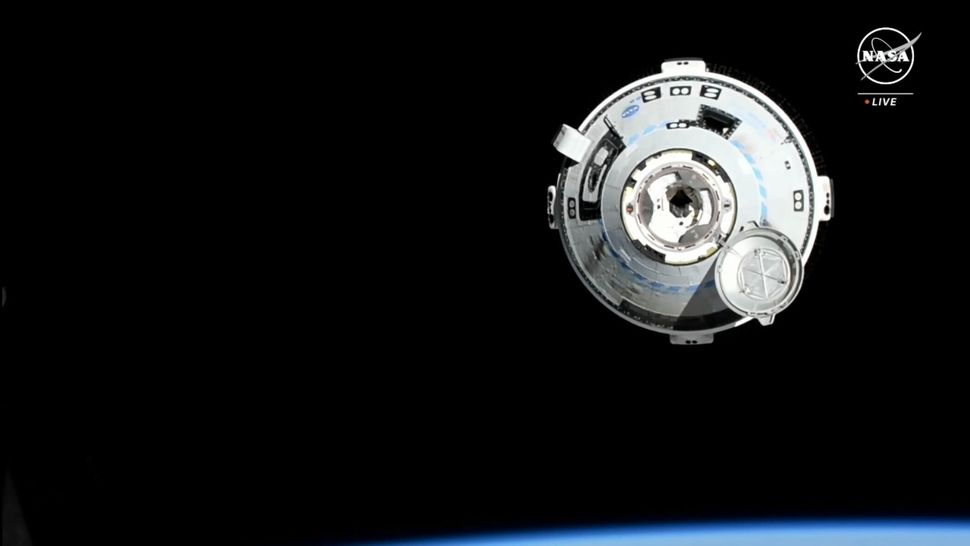Boeing’s Starliner capsule has arrived at its orbital destination.
Starliner reached the International Space Station (ISS) today (June 6), making contact with the orbiting lab at 1:34 p.m. EDT (1734 GMT) as the duo flew over the southern Indian Ocean.
That was a bit later than originally planned. Starliner missed its first docking chance, at 12:15 p.m. EDT (1615 GMT), after five of its 28 reaction-control thrusters malfunctioned. But the mission team got four of those impacted thrusters back online, and Starliner was cleared to approach the ISS in the next window. (You can follow our Boeing Starliner live updates for the latest on the mission.)

Starliner launched Wednesday (June 5) on its first-ever astronaut mission, known as Crew Flight Test. CFT is sending NASA astronauts Butch Wilmore and Suni Williams to the ISS for a roughly week-long stay.
“Butch and Suni, nicely done,” Neal Nagata, NASA’s CAPCOM (spacecraft communicator) radioed the Starliner astronauts from Mission Control in Houston. “Welcome back to the ISS.”
“Nice to be attached to the big city in the sky,” Wilmore radioed to Mission Control. “It’s a great place to be. We’re looking forward to staying here for a couple of weeks and getting all the things that we need to get done.”
About two hours after, Wilmore and Williams opened Starliner’s hatch and entered the International Space Station and received a warm greeting by the seven members of the station’s current Expedition 71 crew. They were welcomed by the ringing of a bell (an ISS tradition), music and zero gravity “dancing” as the pair floated around the Harmony module, hugging their new crewmates.
“Wow, great to be back here,” Wilmore said during a welcome ceremony. “Obviously, we certainly have been gone for a little while, but it’s very familiar.” Both Wilmore and Williams have flown to the space station before on previous missions.
“There’s only one problem,” Wilmore added as he turned to NASA astronaut Matt Dominick on the Expedition 71 crew. “Matt is in my crew quarters. I don’t know what we’re gonna do about that. But thank you all for the great welcome.”
If all goes well with CFT, Starliner will be certified to fly long-duration astronaut missions to the orbiting lab for NASA.
Boeing received a $4.2 billion contract to do just this back in 2014. SpaceX got one as well, worth $2.6 billion. Elon Musk’s company flew its version of CFT, known as Demo-2, in 2020 and is in the middle of its eighth operational crewed mission to the ISS.
Starliner’s thruster issues tody followed two helium leaks the mission team detected after the capsule reached orbit. A different helium leak cropped up before launch as well, but was not regarded as a serious problem.
Editor’s note: This story was updated at 4:30 p.m. ET on June 6 to include comments of the Starliner astronaut crew after arriving at the ISS.